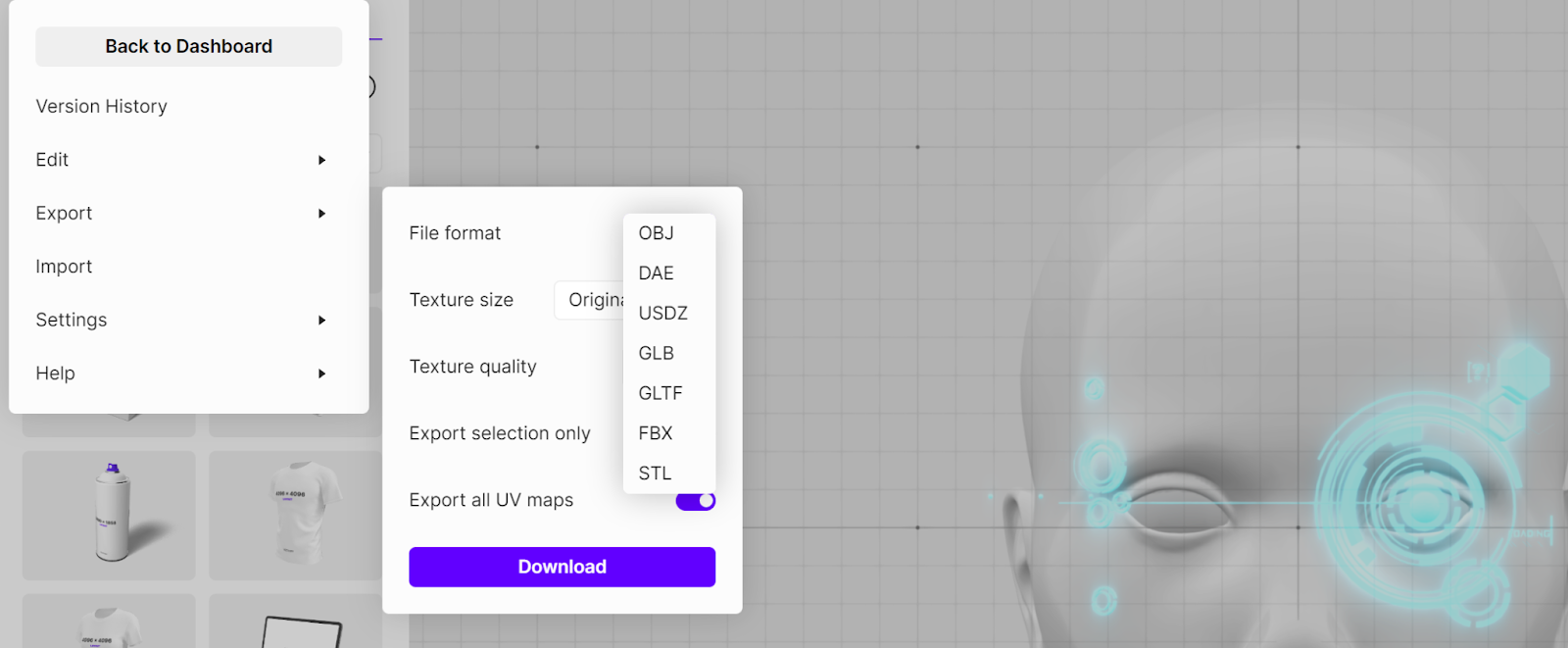Make 3D filters for Augmented Reality Ads on Instagram
Earn money with AR effects on Instagram or Facebook.
Creating an AR effect for Instagram and Facebook is a great way to start earning money as a 3D designer. Brands have a need not only to engage with their followers on social media, but also bring their products and messages into a new medium and ad format - Augmented Reality.
From Face masks to immersive experiences triggered by pointing camera on 2D graphics, all these can be built in a Meta’s native app Spark AR Studio. There are two ways to bring your idea to life. You can import your own 3D object, customize and optimize it as needed, or you can design one from scratch. You don’t need to download complicated software in order to do that. Everything can be done in Vectary - online.
What kind of 3D objects for Spark AR can be created in Vectary?
Anything. Vectary has a set of user-friendly tools that can do the job for you. Thanks to that you can:
- Convert 2D SVG graphics to 3D to create 3D UI elements
- Create 3D typography using 3D fonts
- Create 3D icons and floating elements
- Use 3D mockups and 3D object from the Elements library
- Create cartoons and 3D characters
- Import, customize 3D files
What 3D file format works the best for AR filter creation?
Spark AR Studio supports importing of these 3D file formats:
- FBX 2015 (binary and ASCII versions)
- gITF 2 (binary and text versions)
- COLLADA/DAE
- OBJ
- DAE

How to create a custom 3D object for Spark AR Studio
- Open Vectary Studio
- Create a 3D object or import a 3D file to customize it
- Export as glTF
- Open Spark AR studio
- Choose one of the templates such as Face decoration or World object
- Import the glTF
Watch the tutorial:
Best practice:
- Use gtTF files as it’s the most universal format and keeps all the information about meshes, textures and materials.
- Keep the triangle count below 22K. This is usually more than the polygon count you see in Vectary. (Polygons are converted to triangles on export to glTF - every polygon gets converted to N-2 triangles, where N is number of vertices in polygon. e.g. rectangles are 2 triangles, pentagons are 3 triangles) Use the ‘Simpify’ tool to reduce the polygon count.
- Keep the file size below 4MB (Check out the tutorial on how to optimize 3D models).
- Texture transform tools are not supported in Spark AR Studio. They will not be loaded even if you used them in Vectary (tiling/offset/rotation).
Create an Augmented Reality Ads for brands on Facebook and Instagram
Recently Meta introduced a new format: Augmented Reality ads. This is a great opportunity to dive into AR filters creations and as a designer or an agency, offer brands something extra.

How to create an Ads Effects on Instagram:
- Go to Spark AR Hub under your Facebook account
- Choose Effects in the Ad section
- Upload your Spark AR file
- Choose a platform: Instagram or Facebook
- Select a page you want to publish the AR effect to
- Upload a video of the effect
- Press Submit

Here are just a few ideas on Augmented Reality ads effects:
- Try-ons of various product variations e.g. Sunglasses, jewelry, AR makeup
- On-site events with immersive experiences targeted to a specific geographic location
- Creating AR floating elements around the product
- Face masks supporting the campaign messaging for social media
- Turning 2D ads in magazines or catalogs to Augmented Reality experiences
- Option for users to become part of the branding